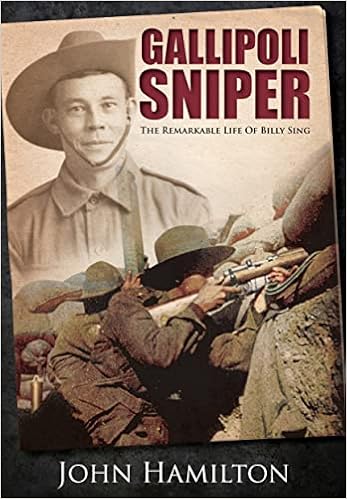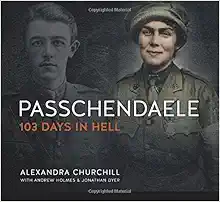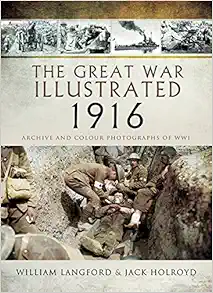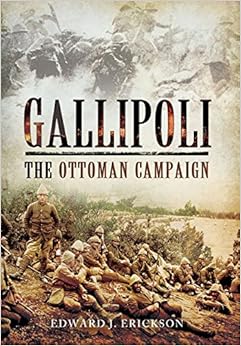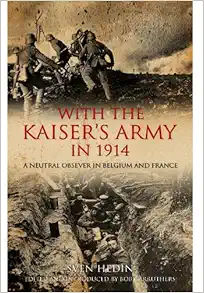Idealist and Realists views on the Great War
By Vernon Yates
The fighting of World War I (WWI) brought to European countries vast amounts of destruction and death to its people and to the established ruling realms of the time. The war forever changed the views of the common citizen and the role of government to protect them. No longer would secret treaties and imperialists views be tolerated in government functions. The feelings and competing agendas of both sides that fought WWI now placed their trust into the President Woodrow Wilson’s Fourteen Points and The Treaty of Versailles. This paper will compare and contrast the different roles that Idealist and Realists views played with ending the war and seeking a just peace for all sides in the lens of a Realists and Idealists.
Dangerous Liaisons: The Deadly Consequences of WWI's Alliances
By Daniel McEwen
[November, 1918] With the signing of the armistice, German soldiers, hollow-eyed with battle fatigue and hunger, abandon their trenches and begin walking home from France four long years after Kaiser Wilhelm 2nd had boastfully promised them victory there within four months. Their dirty gray columns are escorted to the German border by squads of Allied troops who follow at a prearranged distance. Victor and vanquished alike, these men are among the lucky survivors of a war that had just killed 40 million men, women and children while also triggering the most momentous reset of the global order since the Fall of Rome. Although the judgment of history is that Germany’s military leaders were most at fault in starting the war, there’s always been plenty of blame to go around. Fingers were also pointed at the two alliances that divided the six, The Triple Entente [Britain, France, Russia] and The Triple Alliance, a.k.a. the Central Powers Alliance [Germany Austro-Hungary, Italy]. The accusation is that rather than deter war as hoped, these alliances either obligated or enabled its members to join the fight, turning what should have been a small Balkan war into the first world war.
The Schlieffen Plan and a Two-Front War
By Peter Kauffner
Few plans have become famous in their own right. Alfred von Schlieffen’s plan to invade France through Belgium is an outstanding exception. Schlieffen was head of the German General Staff, the army’s planning division, from 1891 to 1906. A modified version of his plan was used when World War I broke out in August 1914. So much has been written about the plan over the years it may sound unlikely that there is anything new to say. But a great deal of fresh scholarship was published for the hundred year anniversary in 2014, including translations of the deployment plans. It is often claimed that the plan was a response to the threat of a two-front war. Yet Schlieffen’s own writing shows that this was not his motivation. The plan is better explained as an example of “cult of the offensive,” an aggressive approach to military planning that was popular in various nations at this time. Historians have long seen Schlieffen as a master technician of war, but political pressures from Kaiser Wilhelm II and others may have played a role in the development of the plan.
The Battle of Amiens: The Beginning of the End
By Michael G. Stroud
The German offensives of Spring 1918, also known as Kaiserschlacht or the “Emperor’s Battle,” were a massive German effort to hammer the French and British allies and force an accord before the full might of the American Expeditionary Force or AEF, could be brought to bear and tip the military advantage in the Allies favor. When the Kaiserschlacht ended on 29 April 1918, over 500,000 casualties had been claimed in total from all sides, with Germany having born the largest losses with over 340,000 men. Recognizing that the German army was exhausted and depleted from constant combat, internal turmoil back home, and the breakout of the influenza, French military commander Marshal Ferdinand Foch (1851-1929) devised a strategy centered around attacks by the various Allied armies of the British, French, and Americans to reclaim the initiative. This campaign would begin at the logistically important city of Amiens on the Somme River in northern France, which would prove to be the turning point of the entire war. This critical battle would see the implementation of lessons learned in combined arms as a way forward to victory.
South Africa in WWI
By Herman Warden
The Union of South Africa was established in 1910 and was to remain a dominion of the British Empire. Tensions still existed between the English and the Afrikaans speaking South Africans, as they had recently engaged each other during the South African War 1889-1902 .[1] A Boer rebellion consequentially followed in 1914 after South Africa joined World War I on the side of Great Britain.[2] As a British Dominion, South Africa became involved in the War with its first task of taking over German South West Africa (GSWA) and aiding in the victory of the Entente against the Central Powers. On August 1915 South African troops departed for Britain where they had to build up their strength before going to France, to take part in the upcoming Allied offensives. The battle of Delville Wood formed part of one such allied offensive namely the battle of the Somme. The battle of Delville Wood started on 14 July 1916 and ended a month later.[3] The whole aim of the Battle of the Somme and more especially Delville Wood was to affect a breakthrough in the German Lines. It was believed that by capturing the German second and third line of trenches the task of breaking through the German lines would be much easier. Thereby, making an Entente victory more easily obtainable.[4]
Tragedy on the Somme
By Del Kosta
The story of the Somme really begins in August of 1914 during the opening days of the First World War. Great Britain entered the war with an extremely small but highly efficient professional army of 250,000 troops.[1] The army’s main role since the end of the Boer War was simply to police the British territorial empire, while Britain’s national security was vested in its large and powerful Royal Navy. Realizing the disparity in numbers between Britain’s land army and the massive, conscript-fueled German and French armies now squaring off on the continent, British Secretary of State for War Lord Kitchener issued an immediate call for volunteers to raise an additional 100,000 troops.[2] All across Britain, local politicians and leading citizens rushed to establish recruiting drives to fulfill Kitchener’s call to arms. In the city of Liverpool, the Honorable Edward Stanley, 17th Earl of Derby and a war hero in his own right from his service during the Boer War, led a recruitment drive based on camaraderie and civic pride. Acting on a suggestion put forth by his friend General Sir Henry Rawlinson, Lord Derby offered recruits the option of joining a battalion comprised entirely of their friends, co-workers and neighbors from the immediate Liverpool area. The idea was an immediate success. Derby enlisted over 1500 men on his very first day of recruitment using this “Battalion of Pals” inducement.[3]
U.S. Army Model 1913 Cavalry Saber
By Bob Seals
For some 159 years, United States Army used an edged sword, the saber, as the primary weapon for mounted troops. Whether called light horse, dragoon, or cavalry, the Army cavalry trooper on horseback carried a saber, with which to engage the various foes of our republic. The last issued Army saber in a long line, the model 1913 saber, became popularly known as "The Patton Saber," after then Second Lieutenant George S. Patton, Jr., who it is commonly believed was somehow responsible for the design and adoption of the new saber, during that very same year. Over the years, some authors, and historians, have questioned the veracity of conventional historical wisdom in naming the model 1913 saber "The Patton Saber," since, after all, how much influence could a lowly Second Lieutenant have had in the U.S. Army's procurement of a new weapon?[2] The purpose of this article is to introduce the reader to the U.S. Army model 1913 saber, and examine the facts surrounding the adoption of this last saber issued to Army troopers from before the First World War, until its subsequent withdraw as a modern weapon in the interwar year of 1934. A review of the historical record, and timeline, surrounding the saber, does indicate that Second Lieutenant George S. Patton, Jr. was indeed responsible for the Army's adoption of the saber, displaying those considerable powers of single mindedness, will, dedication, and zeal that made him such an effective maneuver combat general three decades later in North Africa and Europe. Patton's thinking, study, experimentation, and advocacy of this new edged weapon were indicative of his professional development as a military leader. This professional development was to ultimately lead the young, but talented officer, to recognize the value of the armored tank replacing a shiny saber as the weapon of choice for a modern mounted Army.
Saint Augustine, Martin Luther and the Origins of WWI
By Edward J. Langer
On June 28, 1914, Archduke Franz Ferdinand and his wife Duchess Sophie were assassinated by Gavrilo Princip in Sarajevo, Bosnia-Herzegovina. Archduke Ferdinand was heir to the throne of Austria-Hungary. Gavrilo Princip was a member of the Serbian terrorist organization known as the Black Hand, a group who sought to separate Bosnia-Herzegovina from the Austrian-Hungary Empire and join it with Serbia (Servia).[1] Austria reacted to the assassination by attempting to crush any and all Serbian nationalist movements. Serbia looked to Czar Nicholas II of Russia for protection. Austria-Hungary looked to Kaiser Wilhelm II of Germany for support. During the month following the assassination there was intense diplomatic activity by all the great powers in Europe to resolve differences between Serbia and Austria-Hungary and to avert another European war. All of this activity came to no avail as war erupted on July 28, 1914 between Serbia and Austria-Hungary.
The Second Battle of Ypres
By James J. Warrick
By the morning of April 22, 1915, Private Percy Kingsley, assigned to the Canadian Expeditionary Forces 5th Battalion, 2nd Brigade had been living in the trenches along the salient at Ypres for seven days. A young man from Humboldt, Saskatchewan, Canada, he was part of the first nineteen men from his town to volunteer for service in Europe. He had not slept in days given the horrendous conditions in the trenches, often sleeping on “a grave containing a number of dead Germans”.[1] The horror was only beginning and in a matter of hours, he would bear witness to a new type of warfare unlike any seen to date. That afternoon, the Germans on the Western Front opened another series of artillery barrages along the Ypres salient. Instead of an infantry assault, what followed was a yellow-green cloud that drifted across the no-man’s land toward the Allies. The Second Battle of Ypres saw the first use of chemical weapons in war with its threat of use not taken seriously by the French and British nor was its employment taken advantage of by the Germans. This attack ushered in a new form of warfare in the 20th century and it would forever change the landscape of Europe. The understanding of how horrific chemical weapons could be was already understood by 1899 when the major powers signed The Hague Convention.[2] The provisions under this agreement included the restriction on using any artillery shells containing gas agents. abide by the additional statutes of the 1907 Hague Convention.[4]
The Evolution of British Infantry tactics in World War One
By Roger Daene
World War One on the Western Front is often times depicted as a series of senseless battles where infantry ran across open fields only to be slaughtered by machinegun and artillery fire. The popular conception is that there were little innovations in tactics. Wilhelm Balck, a German division commander, had written many articles and manuals on tactics before the Great War.[1] He said, “Bullets quickly write new tactics.” After the Battle of the Marne in 1914 and the subsequent German retreat, the war on the western front became more of a positional war rather than a war of maneuver. The goal of the Allies and the Germans was to penetrate the enemy’s main defense lines and exploit any breakthrough. The goal would be hard to attain because of the unique nature of warfare in World War One. Never before in the history of the world were so many new weapons introduced or old ones that suddenly became practical enough to use on a wide scale. World War One would see the introduction of the airplane, tank, and poison gas which had never been used on any battlefield. Although artillery had been around for centuries, recent innovations allowed for larger pieces to be developed that fired a heavier shell even greater distances than ever before. The machinegun had been used on other battlefields but now the machineguns were more mobile and would be used in greater numbers.
Was Britain's Participation in WWI Justified?
By Andrew Wright
In the summer of 1914 Europe plunged into war. Isolated by the English Channel and protected by the much vaunted Royal Navy, Britain, as always, had the chance to decide whether or not to participate in the struggle. After the German invasion of Belgium, Britain decided to come to the aid of Belgium and France and subsequently declared war on Germany. During the next four years Britain would suffer horrendous casualties, lose much of her vast wealth, and surrender her paramount position as the leading power of the world. But does this mean it was a mistake for Britain to participate in the First World War? It is likely that without British intervention the Germans would have won the war and dominated the continent of Europe. England also had legal and moral obligations to her allies. Finally, while the Germans' conduct during the war never reached the brutal excesses of the Second World War, it can be argued that they were fighting an unjust war, both in their conduct, and in their aims. For strategic, legal and moral reasons, Britain's participation in the First World War was justified.
Plague of the Spanish Lady
By David W. Tschanz, PhD
In August 1918 while World War I raged from Finland to Mesopotamia an epidemic began. In two months it covered the globe, sparing only Tristan da Cunha in the extreme South Atlantic. No one has ever figured out how it traveled such great distances in so short a time. Coast Guard search parties, for example, discovered Eskimo villages in remote, seemingly inaccessible locations wiped out to the last adult and child. Most of its victims were young men aged 18 to 45. Many of them went from perfect health to the coldness of the grave in less than a day. It crippled troop movements, slowed the reinforcement of Pershing, broke the already fragile German morale and shattered the Kaiser's war effort. Only the Black Death of the 14th Century and the Plague of Justinian of the 6th Century, would rival it in the rate it claimed human lives. Neither would match it in its speed. In four months it would make the death toll from the greatest of all of mankind's wars till that time look like a beginner's course in death and destruction. Nearly three times as many American soldiers would die from it as from enemy action in the same space of time. Virtually all of the deaths among American sailors in World War I were from the disease or its sequel, pneumonia. By the time the Armistice was signed on November 11th, the epidemic had disappeared. In its wake it left behind, by conservative estimates, at 27 million dead -- including an incredible twelve million dead in India alone. It had a number of names: "the plague of the Spanish lady", "Spanish influenza" or "the grippe".
Bullets Quickly Write New Tactics: WWI Tactics
By Roger Daene
Wilhelm Balck said about tactics, “Bullets quickly write new tactics.” He was a divisional commander in the First World War and had written many articles and manuals on tactics before the Great War.[1] After the Battle of the Marne in 1914 and the subsequent German retreat, the war on the western front became more of a positional war rather than a war of maneuver. The Allied and German nearly unattainable goal was to penetrate the enemy’s main defense lines and exploit any breakthrough. New tactics would be developed after the bullets started flying. The German Army made some fundamental changes to both its offensive and defensive tactics during the winter of 1916/1917 and again in the winter of 1917/1918. In spite of all the adjustments, the spring offensive of 1918 failed. The Germans began questioning and studying why they failed in their last gamble to win the war. To answer the question of why the tactical changes made by the German Army did not bring them victory in the Spring Offensive, it is necessary look at the evolution of tactics that began in 1915. The slaughter at the First Battle of Ypres showed that continued adherence to the established tactics could only result in unsustainable casualties. New offensive and defensive tactics began to take shape.
Decisions of Disaster: Jutland 1916
By Alan R. McGahey
On the morning of October 21, in the year 1805, three naval fleets met at Cape Trafalgar off the Spanish coast. Napoleon had ordered his admirals to mass the French and Spanish fleets together against Lord Horatio Nelson and the British Fleet. Admiral Horatio Nelson went to sea at age twelve and fought in many battles throughout his career. Because of one of these battles, he received a wound in his right arm by grapeshot (a clustered projectile used against boarding parties) forcing the doctor to amputate his arm. Admiral Nelson’s thirty-five years at sea coupled with his combat experience refined his leadership abilities.[1] Although Lord Nelson died at the Battle of Trafalgar, the British decimated the combined fleets of France and Spain. Through the superior leadership, training, and number of weapons per ship, Lord Nelson and his men defeated Napoleon’s combined fleet. This victory at sea secured the supremacy of the Royal Navy for the next 100 years, and ended the French plan to invade England. Lord Nelson told his officers and sailors during the battle, “England confides that every man will do his duty”. After the battle was over and as Nelson lay dying, Capt Hardy gave Nelson the good news that they had defeated the enemy. Nelson responded, “Thank God I have done my duty” and then died at 4:30 p.m. [2]
The Battle Tannenberg, 1914
By Birrion Sondahl
The Battle of Tannenberg was the first major battle in World War I on the eastern front. It pitted the forces of Russia against those of Germany. The major battle was preceded by a much more minor affair at Gumbinnen which had a great influence upon the course of the campaign. The Gumbinnen encounter led into the actual Battle of Tannenberg where the German Eighth Army encircled the Russian Second Army. The result of the battle was near total annihilation of the Russian forces. There were many factors which played a part in the German victory. These included logistics, intelligence, terrain, and communication among others. Overall the Battle of Tannenberg was one of the only battles of maneuver conducted in a war which is remembered for its static positions. The German victory at Tannenberg allowed for the war to continue when an early Russian victory could perhaps have knocked Germany out of the war. The start of World War I on the eastern front found Germany in a precarious position. The majority of her troops had been sent to the western front and committed to the offensive there as outlined by the Schlieffen plan.
By Vernon Yates
The fighting of World War I (WWI) brought to European countries vast amounts of destruction and death to its people and to the established ruling realms of the time. The war forever changed the views of the common citizen and the role of government to protect them. No longer would secret treaties and imperialists views be tolerated in government functions. The feelings and competing agendas of both sides that fought WWI now placed their trust into the President Woodrow Wilson’s Fourteen Points and The Treaty of Versailles. This paper will compare and contrast the different roles that Idealist and Realists views played with ending the war and seeking a just peace for all sides in the lens of a Realists and Idealists.
Dangerous Liaisons: The Deadly Consequences of WWI's Alliances
By Daniel McEwen
[November, 1918] With the signing of the armistice, German soldiers, hollow-eyed with battle fatigue and hunger, abandon their trenches and begin walking home from France four long years after Kaiser Wilhelm 2nd had boastfully promised them victory there within four months. Their dirty gray columns are escorted to the German border by squads of Allied troops who follow at a prearranged distance. Victor and vanquished alike, these men are among the lucky survivors of a war that had just killed 40 million men, women and children while also triggering the most momentous reset of the global order since the Fall of Rome. Although the judgment of history is that Germany’s military leaders were most at fault in starting the war, there’s always been plenty of blame to go around. Fingers were also pointed at the two alliances that divided the six, The Triple Entente [Britain, France, Russia] and The Triple Alliance, a.k.a. the Central Powers Alliance [Germany Austro-Hungary, Italy]. The accusation is that rather than deter war as hoped, these alliances either obligated or enabled its members to join the fight, turning what should have been a small Balkan war into the first world war.
The Schlieffen Plan and a Two-Front War
By Peter Kauffner
Few plans have become famous in their own right. Alfred von Schlieffen’s plan to invade France through Belgium is an outstanding exception. Schlieffen was head of the German General Staff, the army’s planning division, from 1891 to 1906. A modified version of his plan was used when World War I broke out in August 1914. So much has been written about the plan over the years it may sound unlikely that there is anything new to say. But a great deal of fresh scholarship was published for the hundred year anniversary in 2014, including translations of the deployment plans. It is often claimed that the plan was a response to the threat of a two-front war. Yet Schlieffen’s own writing shows that this was not his motivation. The plan is better explained as an example of “cult of the offensive,” an aggressive approach to military planning that was popular in various nations at this time. Historians have long seen Schlieffen as a master technician of war, but political pressures from Kaiser Wilhelm II and others may have played a role in the development of the plan.
The Battle of Amiens: The Beginning of the End
By Michael G. Stroud
The German offensives of Spring 1918, also known as Kaiserschlacht or the “Emperor’s Battle,” were a massive German effort to hammer the French and British allies and force an accord before the full might of the American Expeditionary Force or AEF, could be brought to bear and tip the military advantage in the Allies favor. When the Kaiserschlacht ended on 29 April 1918, over 500,000 casualties had been claimed in total from all sides, with Germany having born the largest losses with over 340,000 men. Recognizing that the German army was exhausted and depleted from constant combat, internal turmoil back home, and the breakout of the influenza, French military commander Marshal Ferdinand Foch (1851-1929) devised a strategy centered around attacks by the various Allied armies of the British, French, and Americans to reclaim the initiative. This campaign would begin at the logistically important city of Amiens on the Somme River in northern France, which would prove to be the turning point of the entire war. This critical battle would see the implementation of lessons learned in combined arms as a way forward to victory.
South Africa in WWI
By Herman Warden
The Union of South Africa was established in 1910 and was to remain a dominion of the British Empire. Tensions still existed between the English and the Afrikaans speaking South Africans, as they had recently engaged each other during the South African War 1889-1902 .[1] A Boer rebellion consequentially followed in 1914 after South Africa joined World War I on the side of Great Britain.[2] As a British Dominion, South Africa became involved in the War with its first task of taking over German South West Africa (GSWA) and aiding in the victory of the Entente against the Central Powers. On August 1915 South African troops departed for Britain where they had to build up their strength before going to France, to take part in the upcoming Allied offensives. The battle of Delville Wood formed part of one such allied offensive namely the battle of the Somme. The battle of Delville Wood started on 14 July 1916 and ended a month later.[3] The whole aim of the Battle of the Somme and more especially Delville Wood was to affect a breakthrough in the German Lines. It was believed that by capturing the German second and third line of trenches the task of breaking through the German lines would be much easier. Thereby, making an Entente victory more easily obtainable.[4]
Tragedy on the Somme
By Del Kosta
The story of the Somme really begins in August of 1914 during the opening days of the First World War. Great Britain entered the war with an extremely small but highly efficient professional army of 250,000 troops.[1] The army’s main role since the end of the Boer War was simply to police the British territorial empire, while Britain’s national security was vested in its large and powerful Royal Navy. Realizing the disparity in numbers between Britain’s land army and the massive, conscript-fueled German and French armies now squaring off on the continent, British Secretary of State for War Lord Kitchener issued an immediate call for volunteers to raise an additional 100,000 troops.[2] All across Britain, local politicians and leading citizens rushed to establish recruiting drives to fulfill Kitchener’s call to arms. In the city of Liverpool, the Honorable Edward Stanley, 17th Earl of Derby and a war hero in his own right from his service during the Boer War, led a recruitment drive based on camaraderie and civic pride. Acting on a suggestion put forth by his friend General Sir Henry Rawlinson, Lord Derby offered recruits the option of joining a battalion comprised entirely of their friends, co-workers and neighbors from the immediate Liverpool area. The idea was an immediate success. Derby enlisted over 1500 men on his very first day of recruitment using this “Battalion of Pals” inducement.[3]
U.S. Army Model 1913 Cavalry Saber
By Bob Seals
For some 159 years, United States Army used an edged sword, the saber, as the primary weapon for mounted troops. Whether called light horse, dragoon, or cavalry, the Army cavalry trooper on horseback carried a saber, with which to engage the various foes of our republic. The last issued Army saber in a long line, the model 1913 saber, became popularly known as "The Patton Saber," after then Second Lieutenant George S. Patton, Jr., who it is commonly believed was somehow responsible for the design and adoption of the new saber, during that very same year. Over the years, some authors, and historians, have questioned the veracity of conventional historical wisdom in naming the model 1913 saber "The Patton Saber," since, after all, how much influence could a lowly Second Lieutenant have had in the U.S. Army's procurement of a new weapon?[2] The purpose of this article is to introduce the reader to the U.S. Army model 1913 saber, and examine the facts surrounding the adoption of this last saber issued to Army troopers from before the First World War, until its subsequent withdraw as a modern weapon in the interwar year of 1934. A review of the historical record, and timeline, surrounding the saber, does indicate that Second Lieutenant George S. Patton, Jr. was indeed responsible for the Army's adoption of the saber, displaying those considerable powers of single mindedness, will, dedication, and zeal that made him such an effective maneuver combat general three decades later in North Africa and Europe. Patton's thinking, study, experimentation, and advocacy of this new edged weapon were indicative of his professional development as a military leader. This professional development was to ultimately lead the young, but talented officer, to recognize the value of the armored tank replacing a shiny saber as the weapon of choice for a modern mounted Army.
Saint Augustine, Martin Luther and the Origins of WWI
By Edward J. Langer
On June 28, 1914, Archduke Franz Ferdinand and his wife Duchess Sophie were assassinated by Gavrilo Princip in Sarajevo, Bosnia-Herzegovina. Archduke Ferdinand was heir to the throne of Austria-Hungary. Gavrilo Princip was a member of the Serbian terrorist organization known as the Black Hand, a group who sought to separate Bosnia-Herzegovina from the Austrian-Hungary Empire and join it with Serbia (Servia).[1] Austria reacted to the assassination by attempting to crush any and all Serbian nationalist movements. Serbia looked to Czar Nicholas II of Russia for protection. Austria-Hungary looked to Kaiser Wilhelm II of Germany for support. During the month following the assassination there was intense diplomatic activity by all the great powers in Europe to resolve differences between Serbia and Austria-Hungary and to avert another European war. All of this activity came to no avail as war erupted on July 28, 1914 between Serbia and Austria-Hungary.
The Second Battle of Ypres
By James J. Warrick
By the morning of April 22, 1915, Private Percy Kingsley, assigned to the Canadian Expeditionary Forces 5th Battalion, 2nd Brigade had been living in the trenches along the salient at Ypres for seven days. A young man from Humboldt, Saskatchewan, Canada, he was part of the first nineteen men from his town to volunteer for service in Europe. He had not slept in days given the horrendous conditions in the trenches, often sleeping on “a grave containing a number of dead Germans”.[1] The horror was only beginning and in a matter of hours, he would bear witness to a new type of warfare unlike any seen to date. That afternoon, the Germans on the Western Front opened another series of artillery barrages along the Ypres salient. Instead of an infantry assault, what followed was a yellow-green cloud that drifted across the no-man’s land toward the Allies. The Second Battle of Ypres saw the first use of chemical weapons in war with its threat of use not taken seriously by the French and British nor was its employment taken advantage of by the Germans. This attack ushered in a new form of warfare in the 20th century and it would forever change the landscape of Europe. The understanding of how horrific chemical weapons could be was already understood by 1899 when the major powers signed The Hague Convention.[2] The provisions under this agreement included the restriction on using any artillery shells containing gas agents. abide by the additional statutes of the 1907 Hague Convention.[4]
The Evolution of British Infantry tactics in World War One
By Roger Daene
World War One on the Western Front is often times depicted as a series of senseless battles where infantry ran across open fields only to be slaughtered by machinegun and artillery fire. The popular conception is that there were little innovations in tactics. Wilhelm Balck, a German division commander, had written many articles and manuals on tactics before the Great War.[1] He said, “Bullets quickly write new tactics.” After the Battle of the Marne in 1914 and the subsequent German retreat, the war on the western front became more of a positional war rather than a war of maneuver. The goal of the Allies and the Germans was to penetrate the enemy’s main defense lines and exploit any breakthrough. The goal would be hard to attain because of the unique nature of warfare in World War One. Never before in the history of the world were so many new weapons introduced or old ones that suddenly became practical enough to use on a wide scale. World War One would see the introduction of the airplane, tank, and poison gas which had never been used on any battlefield. Although artillery had been around for centuries, recent innovations allowed for larger pieces to be developed that fired a heavier shell even greater distances than ever before. The machinegun had been used on other battlefields but now the machineguns were more mobile and would be used in greater numbers.
Was Britain's Participation in WWI Justified?
By Andrew Wright
In the summer of 1914 Europe plunged into war. Isolated by the English Channel and protected by the much vaunted Royal Navy, Britain, as always, had the chance to decide whether or not to participate in the struggle. After the German invasion of Belgium, Britain decided to come to the aid of Belgium and France and subsequently declared war on Germany. During the next four years Britain would suffer horrendous casualties, lose much of her vast wealth, and surrender her paramount position as the leading power of the world. But does this mean it was a mistake for Britain to participate in the First World War? It is likely that without British intervention the Germans would have won the war and dominated the continent of Europe. England also had legal and moral obligations to her allies. Finally, while the Germans' conduct during the war never reached the brutal excesses of the Second World War, it can be argued that they were fighting an unjust war, both in their conduct, and in their aims. For strategic, legal and moral reasons, Britain's participation in the First World War was justified.
Plague of the Spanish Lady
By David W. Tschanz, PhD
In August 1918 while World War I raged from Finland to Mesopotamia an epidemic began. In two months it covered the globe, sparing only Tristan da Cunha in the extreme South Atlantic. No one has ever figured out how it traveled such great distances in so short a time. Coast Guard search parties, for example, discovered Eskimo villages in remote, seemingly inaccessible locations wiped out to the last adult and child. Most of its victims were young men aged 18 to 45. Many of them went from perfect health to the coldness of the grave in less than a day. It crippled troop movements, slowed the reinforcement of Pershing, broke the already fragile German morale and shattered the Kaiser's war effort. Only the Black Death of the 14th Century and the Plague of Justinian of the 6th Century, would rival it in the rate it claimed human lives. Neither would match it in its speed. In four months it would make the death toll from the greatest of all of mankind's wars till that time look like a beginner's course in death and destruction. Nearly three times as many American soldiers would die from it as from enemy action in the same space of time. Virtually all of the deaths among American sailors in World War I were from the disease or its sequel, pneumonia. By the time the Armistice was signed on November 11th, the epidemic had disappeared. In its wake it left behind, by conservative estimates, at 27 million dead -- including an incredible twelve million dead in India alone. It had a number of names: "the plague of the Spanish lady", "Spanish influenza" or "the grippe".
Bullets Quickly Write New Tactics: WWI Tactics
By Roger Daene
Wilhelm Balck said about tactics, “Bullets quickly write new tactics.” He was a divisional commander in the First World War and had written many articles and manuals on tactics before the Great War.[1] After the Battle of the Marne in 1914 and the subsequent German retreat, the war on the western front became more of a positional war rather than a war of maneuver. The Allied and German nearly unattainable goal was to penetrate the enemy’s main defense lines and exploit any breakthrough. New tactics would be developed after the bullets started flying. The German Army made some fundamental changes to both its offensive and defensive tactics during the winter of 1916/1917 and again in the winter of 1917/1918. In spite of all the adjustments, the spring offensive of 1918 failed. The Germans began questioning and studying why they failed in their last gamble to win the war. To answer the question of why the tactical changes made by the German Army did not bring them victory in the Spring Offensive, it is necessary look at the evolution of tactics that began in 1915. The slaughter at the First Battle of Ypres showed that continued adherence to the established tactics could only result in unsustainable casualties. New offensive and defensive tactics began to take shape.
Decisions of Disaster: Jutland 1916
By Alan R. McGahey
On the morning of October 21, in the year 1805, three naval fleets met at Cape Trafalgar off the Spanish coast. Napoleon had ordered his admirals to mass the French and Spanish fleets together against Lord Horatio Nelson and the British Fleet. Admiral Horatio Nelson went to sea at age twelve and fought in many battles throughout his career. Because of one of these battles, he received a wound in his right arm by grapeshot (a clustered projectile used against boarding parties) forcing the doctor to amputate his arm. Admiral Nelson’s thirty-five years at sea coupled with his combat experience refined his leadership abilities.[1] Although Lord Nelson died at the Battle of Trafalgar, the British decimated the combined fleets of France and Spain. Through the superior leadership, training, and number of weapons per ship, Lord Nelson and his men defeated Napoleon’s combined fleet. This victory at sea secured the supremacy of the Royal Navy for the next 100 years, and ended the French plan to invade England. Lord Nelson told his officers and sailors during the battle, “England confides that every man will do his duty”. After the battle was over and as Nelson lay dying, Capt Hardy gave Nelson the good news that they had defeated the enemy. Nelson responded, “Thank God I have done my duty” and then died at 4:30 p.m. [2]
The Battle Tannenberg, 1914
By Birrion Sondahl
The Battle of Tannenberg was the first major battle in World War I on the eastern front. It pitted the forces of Russia against those of Germany. The major battle was preceded by a much more minor affair at Gumbinnen which had a great influence upon the course of the campaign. The Gumbinnen encounter led into the actual Battle of Tannenberg where the German Eighth Army encircled the Russian Second Army. The result of the battle was near total annihilation of the Russian forces. There were many factors which played a part in the German victory. These included logistics, intelligence, terrain, and communication among others. Overall the Battle of Tannenberg was one of the only battles of maneuver conducted in a war which is remembered for its static positions. The German victory at Tannenberg allowed for the war to continue when an early Russian victory could perhaps have knocked Germany out of the war. The start of World War I on the eastern front found Germany in a precarious position. The majority of her troops had been sent to the western front and committed to the offensive there as outlined by the Schlieffen plan.

